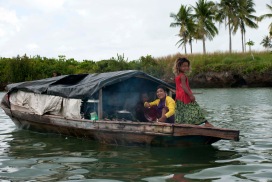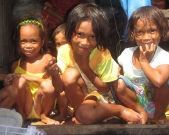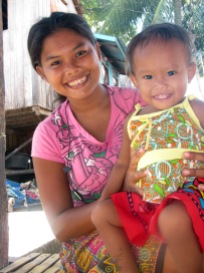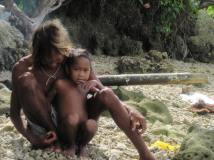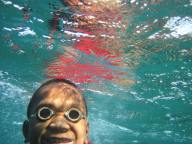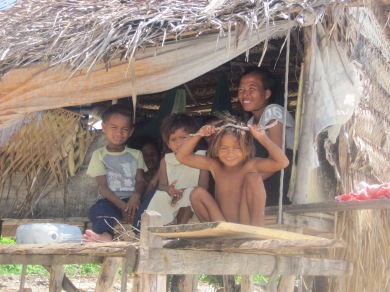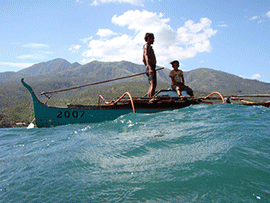Semporna – Renassiance of the Houseboat
At year-end, I and photographer Andreas Ragnatsson went to the Philippines and Malaysia to meet Sama Dilaut. In Davao, the Philippines, we spearfished with superb divers. In Semporna, Malaysia, we visited the islands of Bodgaya, Mabul, Sibuan and Maiga and talked to them who are still living on their “lepa” houseboats.
Different groups of Sama Dilaut
Sama Dilaut in Philippines, Malaysia and Indonesia can be divided into four groups, of which today only two are living on boats. The northernmost group is Sama Dilaut from Zamboanga, Basilan and Jolo, who are generally known as “Badjao” in the Philippines . They live today scattered over large parts of the Philippines, (eg, Davao, Manila, Cebu) where they fled after unrest in the Sulu Sea. None of them live on house boats today, but many still make a living from fishing and live along the shorelines.
The largest group of boat nomads is Sama Dilaut from Bongao, Tawi-Tawi, Philippines . Most of these, however, have fled to Sabah, Malaysia, where many still live on their house boats. Today, there are no nomads left in Tawi-Tawi because of the unsecure situation in the region. Many Sama Dilaut house-dwellers in Semporna told me that they want to return to their boat-dwelling lifestyle, which make them more mobile and give them better fishing opportunities. For many it is only a matter of money – if they would afford it they would build a houseboat and return to the sea.
A closely related group to Sama Dilaut of Tawi-Tawi is Sama Dilaut of Sitankai, Philippines, that used to live on the sea. Many of these people came to Semporna in the 60’s on their houseboats where they established the village Bangaw Bangaw. Today all of them live in houses
The fourth group is Sama Dilaut of Indonesia, who generally are called Indonesian Bajau. They speak a slightly different dialect than their relatives in the Sulu Sea but most words that are related to the sea are identical, as for example “amessi” (hook-and-line fishing), “amana” (speargun fishing) and “amosaj” (to paddle). Indonesian Bajau live over large parts of Sulawesi and even as far south as Flores. Today, only few Indonesian Bajau live on house boats and the number decreaces. Only ten years ago many Indonesian Bajau were boat-dwellers along the eastern coast of Sulawesi (eg, Lasolo) but today there are only few nomads in the Togian Gulf left.
Speargun Fishing in Philippines – an Ecological Living
It is always a pleasant experience to come to the Sama Community in Matina Aplaya, Davao City, Philippines. Almost 100 people greeted me when I entered the village in the beginning of December. I could see children playing drums, fishermen preparing their “pana” (speargun) and women nursing their small children.
Then followed one month of swimming, fishing, playing with children, playing volleyball and celebrating Christmas and New Year.
Skilled 10-year old fisherman
I had the opportunity to follow one of the younger fishermen in the village, Jimmy, 10,at sea. I followed him underwater while he caught fish after fish with his harpoon. He is one of few children in the village that has grew up as a traditional fisherman, and hence, one of few children that has ruptured his eardrum. However, it is getting more and more difficult to make a living from the sea, due to over-fishing and more extreme weather.
But why do they rupture their eardrums? In fact, it is seen as practical since diving is an everyday activity. The ruptured eardrum can be seen as an investment: If you are going to make more than 10 000 dives during your lifetime, and if you never have learned how to equalize properly, then rupturing your eardrum becomes a shortcut to the ocean’s depth. “If you rupture it once, you will have no problem diving throughout your life” one young fisherman explained. Of course, older men have hearing problems and the fishermen will get ear infections over the years as water enters their middle ears … but they are taking inherited medicines … and the inner ear will generally never be affected.
In the Sama community of Matina Aplaya it is still common that the fishermen make up to three week long journeys to abundant fishing spots further south in the Davao Gulf. It is not easy – but not either impossible – to make a living completely from the sea. They sleep on the boat: spearfish during the day and hook-and-line fish in the evening. When they return to the village they normally buy a big fish and share it with their families… Many of the fishermen continue to harvest at sea – no matter what the season or happenings around them.
How big is their ecological footprint?
This is the fourth time I visit the village since 2010 when I started to study about Bajau Laut right here – and I hope to be able to make many future visits. One new thing for this time was that a quite many families had started to make a living from selling of secondhand shoes, that they buy in the market in sacks for either 1 000 pesos or 2 800 pesos each. Then, they are repairing the shoes and selling them to people in Davao and neighboring cities.
In December it is also common that Sama and other local tribes of Davao are playing music and dance while going from house to house begging for food and money. The Sama children are performing with recycled drums, made by metal and plastic waste. A group of enthusiastic children can make 200-300 pesos a day in this way.
Many people might say that Sama are uncivilized and dirty – that they are begging parasites. But in fact they are making a lot of recycling services that the modern Philippine society doesn’t do. For example they collect a lot metal and plastic waste from the shorelines, they reuse and restore clothes and shoes, establish a flourishing second hand market, and they catch fish with sustaining fishing methods. Most of their money goes to purchasing of water and food, like cassava, fish and fruits – even if they also are buying Christmas gifts. Overall, their ecological footprint is nearly zero.
Recently, the Philippine spokesperson at United Nations climate change conference in Doha, Naderev Sano, made a long-lasting impression on many of the listeners. Only days before the eastern Mindanao of Philippines had been hit by a devastating typhoon… ”There is massive and widespread devastation back home. Heartbreaking tragedies like this are not unique to the Philippines”, he said, emphasizing that Philippines and other countries may face more extreme weather disturbances if climate change is left unchecked You can see his speech here: Plea by Naderev M. Sano of the Phillipines and read an article in the Guardian about the speech here: Will Philippines negotiator’s tears change our course on climate change?
Indeed, the Philippines and the world are facing many climate-related challenges – and I am sure that we can learn a lot from the Bajau tackling these problems!
Badjao Association of Matina Aplaya
Another new thing in the community is that they have organized themselves in an organization – The Badjao Associaition of Matina Aplaya. The purpose of the organization is to establish a long-term livelihood for the community, either on fishing or selling of clothes and pearls. For example, the members of the organization will be able to borrow money for a small cost. They are also planning to build a local school: “If the children can learn how to read and write in their own language, they will be able to attend the regular Philippine school”, Lolita, one of the community leaders, said.
In the beginning of January I am heading back to Malaysia – and from there I will go to Sulawesi, Indonesia, where I will live with the Bajo, another Sama Dilaut group, who have been separated from their relatives in Malaysia and Philippines for almost 200 years. In Sulawesi I will visit the isolated village Lasolo – one of the places where their might still be boat-dwelling Sama people outside of Borneo.
Living with Sea Nomads 2012-2013
On October 18th, I am heading towards Southeast Asia for a six months long stay with Bajau Laut – The People of the Sea.
My first stop will be on Borneo, Malaysia, where I will live among Bajau Laut sea nomads. Still, more than hundeds of people spend their entire lives on boats. Here I will gather material for my Master Thesis on dynamite fishing and make a short movie about Bajau Laut’s maritime lifestyle. Thanks to Barnens Stipendiefond that has given me a grant for making the film!
During the journey I will also spend time in southern Philippines, where I will visit a Bajau Laut community in Davao City – where I have lived for several months.
In the beginning of next year I am also heading towards Sulawesi, Indonesia, where I will live among Bajo people (they are relatives of Bajau in Malaysia and Philippines, but speak a different dialect).
Throughout the journey I will also collect diving statistics for professor Erika Schagatay at the Mid-Sweden University. I am bringing three logging devices that will measure how deep the Bajau fishermen dive and for how long they stay under water. The most interesting data is, though, their underwater working time during a longer period of diving.
I will make continuous updates on the blog during the journey.

